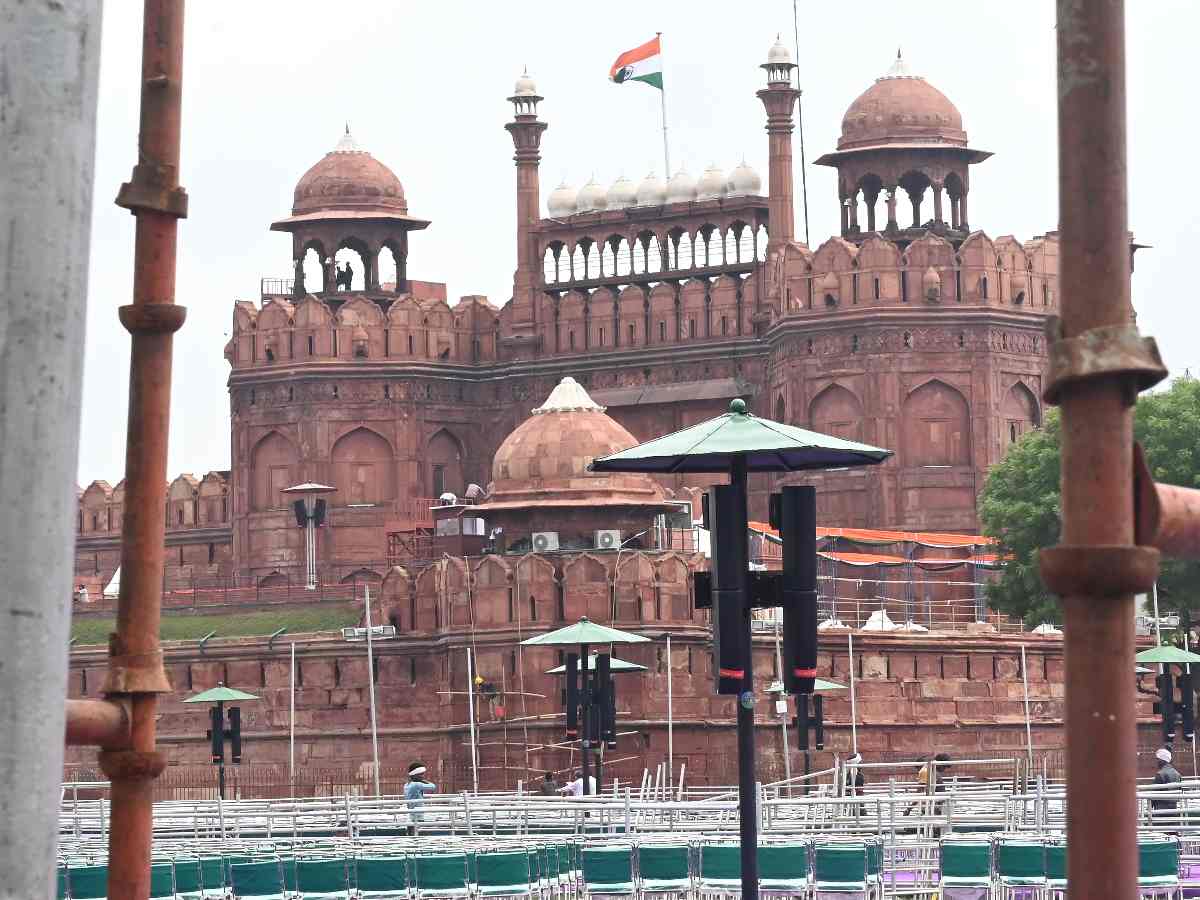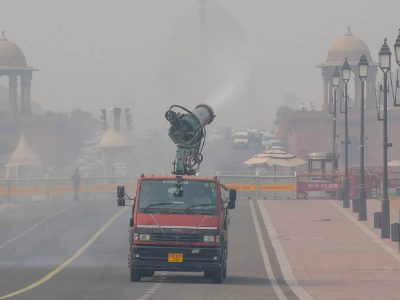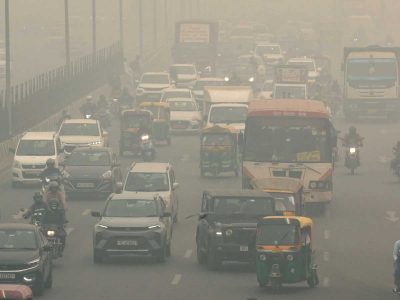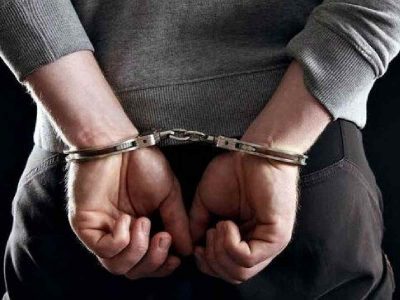India: Streets adorned with the Tricolour, faces painted with orange, green and white colours, and the atmosphere around the Red Fort abuzz with patriotic songs. It’s a happy occasion, after all as India is celebrating its Independence Day on August 15.
Three dates — April 29, 1639, August 15 and 16, 1947 — are of immense significance for the Red Fort.
After India gained independence from British rule on August 15, 1947, the country’s first Prime Minister, Jawaharlal Nehru addressed the nation from the ramparts of Red Fort the next day, on August 16, and vowed to maintain peace, tranquillity and prosperity in the country. He hoisted the national flag at Princes Park, near India Gate on August 15, the day of independence.
The next year, on August 15, 1948, Nehru hoisted the flag and addressed the nation from the Red Fort.
Since then, the Prime Minister of India has been addressing the nation from the Red Fort every year on August 15. Nehru’s speech in 1947 lasted for 72 minutes.
In 2016, Prime Minister Narendra Modi addressed the nation from the Red Fort for 94 minutes, which is considered to be the longest speech delivered by any Prime Minister on Independence Day. Nehru has hoisted the flag at the Red Fort 17 times as Prime Minister, the highest for any Prime Minister.
Looking back
Let’s turn back the pages of history. On April 29, 1639, the fifth Mughal emperor Shah Jahan issued orders to lay the foundation of Red Fort. It was the 12th year of his reign. Shah Jahan’s biography, Badshahnama, states that Shah Jahan decided to build the Red Fort near Salimgarh after consulting Hindu astrologers and Muslim religious leaders.
Sir Syed Ahmad Khan mentions in his book ‘Asar-al-Sanadid’ that Rs 25 lakh were set aside for the construction of Red Fort. Shah Jahan clearly told his officials involved in the construction of the Red Fort that he wanted it to be built quickly. After this order of his, construction experts from all over the country set up camp in Delhi. Shah Jahan had entrusted the responsibility of designing the Red Fort to Ustad Ahmad Lahori, the architect who had also designed Taj Mahal.
The Red Fort was ready after nine years. Shah Jahan was informed of this while he was on a visit to Kabul. He immediately returned to Delhi. He saw this magnificent building for the first time on October 15, 1645 and was delighted.
Nobody could have imagined then that this majestic structure would become the brightest symbol of India’s freedom.
“Red Fort is arguably the most important symbol of our freedom struggle. It has seen so many momentous occasions,” says author and historian Firoz Bakht Ahmed. “I have attended many, many Independence Day functions there when I was growing up.”
Also read: When Natwar Singh made Zia-ul-Haq write for DU college magazine
1857 uprising and the Red Fort
India’s Independence Day would be incomplete without discussing the Red Fort in detail. The Red Fort is also known as ‘Qila-e-Mubarak’. During the 1857 uprising, British soldiers attacked the fort and caused extensive damage to it.
The Red Fort, which is about 1.5 kilometres in circumference, was built in red sandstone and white marble.
It was also important during the 1857 uprising. The last Mughal emperor Bahadur Shah Zafar was leading his army from the Red Fort at that time. This anti-colonial rebellion was ultimately crushed.
He was then tried and exiled to Rangoon in 1858. The Red Fort was adorned with many precious diamonds and gems when it was built, but when the British took control of India, they took away the gems.
Nadir Shah, the emperor of Persia, also attacked the Red Fort in 1747 and plundered it extensively.
“If you want to see the breathtaking beauty of Red Fort, then you must see it during Ramlila. Three Ramlila events are held close to the gigantic walls of Red Fort. In the light of Ramlila pandals, it looks so beautiful and grand,” says Ashish Verma, a social worker in Delhi-6.
Also read: Delhi: Finding ‘Buniyaad’ in Lajpat Nagar
Netaji, Delhi Chalo and the Red Fort
The British occupied the Red Fort for several decades after 1857. Then, a big event took place. Netaji Subhas Chandra Bose gave the slogan ‘Delhi Chalo’ in 1943 to his jawans of Indian National Army (INA). The entire country was ready to fight and die at the call of Netaji. He was in Singapore at the time. After forming the INA, he went to Rangoon and paid his respects to Bahadur Shah Zafar’s grave, the commander of the first war of independence.
He told his comrades to conquer Delhi’s Red Fort, and turn it into a grave of the British empire. A few years later, three of Netaji’s comrades were tried in this very fort. So, it can be said that the Red Fort has a deep connection with India’s independence at several levels. That is why the country’s most special Independence Day celebrations are held here.
But why did the British government grant independence to India on August 15, 1947? Was there a special reason behind choosing this date? Lord Louis Mountbatten had secured the approval of Indian leaders on June 3, 1947, to partition the country into two. Now he had to announce the date of independence. There was a press conference taking place in the Capital.
Towards the end of the conference, Lord Mountbatten was asked, “Has a date been fixed for the transfer of power?”
After a pause, Mountbatten said, “Power will be transferred to Indian hands on August 15, 1947.”
According to historian Raj Khanna, “Campbell Johnson, Mountbatten’s press secretary, once revealed that August 15, 1947 was chosen because on August 15, 1945, Japanese forces surrendered to the Allied forces. On this day, the Second World War ended.”
So, it is clear that Mountbatten wanted India to be liberated on a day that was special in British history.





